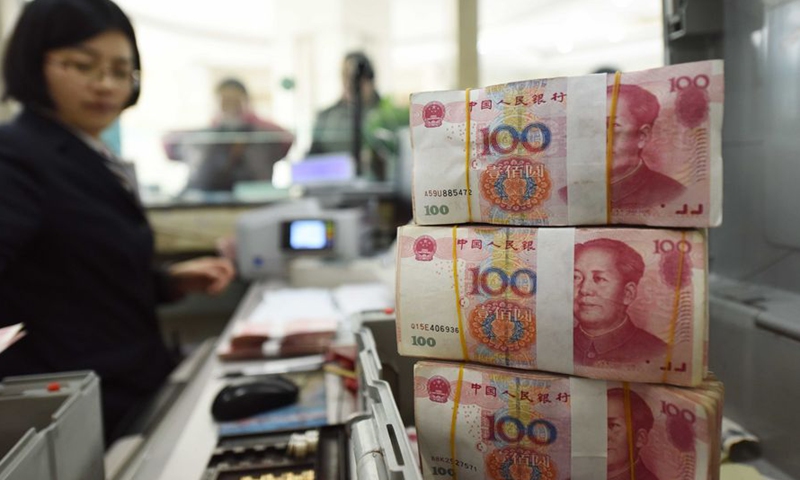
A bank staff member checks RMB banknotes at a bank in Lianyungang, east China's Jiangsu Province, Jan. 7, 2016.Photo:Xinhua
China will promote the reform of small rural commercial banks with the aim to prevent risks and enhance their capability in serving real economy, head of relevant department of the China Banking and Insurance Regulatory Commission (CBIRC) said on Friday.
The regulator stressed that these lenders are prohibited from allowing large deposits and expanding lending operations to urban areas outside their normal areas of business.
The move came as many depositors couldn’t withdraw their money from some rural cooperative banks in Central China’s Henan Province, with a total amount of funds of about 1.2 billion yuan ($179 million), media reports said.
According to data from the CBIRC, there are 3,902 rural banks across the country by the end of 2021, which show an overall sound development trend.
The CBIRC officials said that the authorities have made joint efforts in dealing with high-risk loans and accounts at some small rural banks with a slew of measures, including intensifying the treatment of non-performing loans (NPLs), introducing qualified shareholders and using takeovers.
Since 2018, the financial regulators have helped 627 high-risk small rural banks, disposing of NPLs worth 2.6 trillion yuan, exceeding the total amount in the previous 10 years.
The officials said that the overall risks at small rural banks are within control, but they also face challenges for sustainable development. On one hand, the lenders in some areas have accumulated comparatively high risks, which need more efforts to be defused. On the other hand, the risks caused by the pandemic and other factors are gradually emerging.
In order to carry out further reform to the sector to defuse risks to the financial system, the officials suggested that the regulators expand the source of some funds, for example, deposit insurance funds, to cautiously bail out high-risk rural small banks to avoid a spillover effect. Meanwhile, quality banks, insurance companies and other qualified institutions are encouraged to acquire and merge with the troubled rural banks.
As part of the latest efforts to forestall major financial risks in recent years, the People’s Bank of China, the central bank, has restructured the troubled local lenders – including Baoshang Bank, Bank of Jinzhou, Hengfeng Bank, and Harbin Bank, with strategic investors being introduced to replenish new capital to the small lenders.
Global Times


